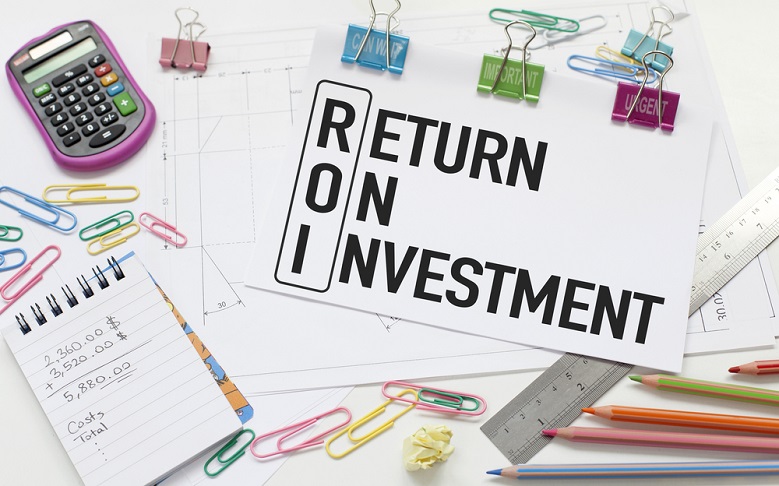
One of the most trusted and popular avenues for passive income generation is ownership of rental property. It can make for a somewhat low-effort income stream that can generate a tidy Return on Investment (ROI). With an investment plan in place that matches your goals, flexibility, and risk tolerance, you could make a significant return on rental property.
Find Foreclosures on Auction.com
First-time real estate investors may find the math involved in calculating this ROI challenging or confusing, but having this lingering uncertainty can be a major hurdle in your investment journey. More discerning investors would prefer to have a clear estimate of how profitable this outing could be by calculating the ROI at the outset.
How to calculate ROI on rental property? A barebones formula to calculate ROI involves dividing the annual returns generated from the property by the total amount invested:
ROI = Total Rental Income ÷ Total Expenditure on Property
However, the above formula isn’t all-inclusive since there are closing and remodeling costs involved, the amount you pay down, and different financing routes. Below, we examine how these variables impact the ROI.
How Different Financing Methods Affect ROI?
As an investor, you have the option to finance the purchase of a rental property either by paying cash or by taking out a mortgage. The calculation of ROI will naturally change as variables such as the down payment amount, timelines, and interest rates are factored in.
Let’s look at each type of ROI calculation.
1)Calculating ROI on Cash Purchases
If you make the payment for the real estate purchase in cash, the calculation is simple. We will look at an example:
I pay for a $150,000 home in cash for which I spend $12,000 on closing costs and remodeling. I am then renting it out for 12 months. So, I pay $162,000 out of pocket for this entire transaction. The tenants pay me $1,500 per month in rent, which comes out to $18,000 annually. What is my ROI on that property?
We divide $18,000 (the annual return on rental) by $162,000 (my total invested cash), so the total ROI is 11.1% for the year.
$18,000 (annual return on rental) ÷ $162,000 (total investment) = 0.111 or 11.1% ROI
While it looks like a sizeable return, it is a gross amount and not a net figure. We must factor in other necessary costs throughout the year, such as taxes and insurance. So, the net ROI will roughly be more like 8% after those expenses.
2)Calculating ROI on Financed Transactions
If you choose to pay by taking out a mortgage and paying down 20%, things get a bit more complicated. But we can arrive at a concise formula by taking the calculation step by step.
My out-of-pocket expense on this transaction will be $30,000 ($150,000 sales price x 20% down payment), plus $15,000 for remodeling and closing costs, for a total of $45,000. Notice that it cost me $3,000 more for closing costs by taking out a mortgage instead of paying cash.
$30,000 (downpayment) + $15,000 (remodeling + closing) = $45,000 (out-of-pocket expense)
(i)30-Year Loan Term:
I am financing $120,000 of the purchase price and paying down $30,000 with cash. I subtract this from the $150,000 sales price. As I am taking out a 30-year loan at 6.96%, my principal and interest make it a total monthly payment of $795. The calculation of principal and interest payments on a mortgage can be rather difficult; you can use an online calculator. We can simplify the calculation by saying that my taxes and insurance add $300 a month. So, I end up making a total monthly payment of $1095.
If my tenant pays me $1500 rent for 12 months, I may be looking at a positive cash flow of $405, as we subtract the $1095 mortgage payment from the $1500 rent. If we multiply $405 into 12 months, I would get an annual cash flow of $4,860.
$405 (monthly cash flow) × 12 = $4,860 (annual cash flow)
To arrive at the ROI, we divide $4,860 by $45,000, which is the original sum of out-of-pocket costs, which is equal to the down payment plus closing costs plus refurbishing costs. The resultant ROI comes out to 10.8%.
$4,860 (annual cash flow) ÷ $45,000 = 0.108 or 10.8% ROI
You can see that the ROI from annual cash flow is 10.8% when it is a 30-year loan term. Paying down the principal builds up equity in the property incrementally. With the plan of action described above, the principal gets paid down from the rent.
Using an amortization schedule calculator, we observe that the first year’s principal payment for the year is $1,228. Adding that amount to the $4,860 from the cash flow gives us $6,088. The new ROI is now 13.5%.
$6,088 (principal paydown + annual cash flow) ÷ $45,000 = 0.135 or 13.5% ROI
While the cash transaction brings in more income each month, the ROI itself gets an added boost when we use the debt from the financed transaction.
(ii)15-Year Loan Term:
When it’s a 15-year loan term, how is the ROI impacted? Let’s say I take a 15-year loan at 5.67%, since 15-year rates are historically 0.75% lower than those of 30-year loans. As my loan term decreases, the monthly principal and interest payment becomes $1026. With the $300 insurance and tax payments, the monthly payment is at $1326, decreasing the cash flow to $174 monthly, or $2,088 annually.
However, the 15-year term brings the 12-month principal payment to $5,004 and with the cash flow added, the paydown is at $7,092. When we divide this figure by $45,000, the ROI turns into an impressive 15.76%.
$7,735 (principal paydown + annual cash flow) ÷ $45,000 = 0.1576 or 15.76% ROI
This goes to show that a 15-year loan term produces a greater annual ROI than a 30-year one. Moreover, irrespective of the loan term, paying down more than 20% correlates to a decrease in ROI.
Based on the examples above, we found that for a sales price of $150,000 and with a monthly rent of $1500 coming in, the ROIs for each type of transaction would be as follows:
|
ROI on Cash Transaction: 8% ROI when Financing with 15-Year Mortgage: 15.76% ROI when Financing with 30-Year Mortgage: 13.5%
|
The above figures and resultant ROIs are not set in stone. There are several other moving parts such as tax deductions, depreciation, sweat equity, and so on to consider for the bigger picture. Generally speaking, financing a rental property can lead to a greater ROI than paying in cash . Of course, using leverage may make your acquisition riskier. For a higher monthly cash-flow, investors may wish to stick to cash. Happy investing!
Create A Free Auction.com Account

